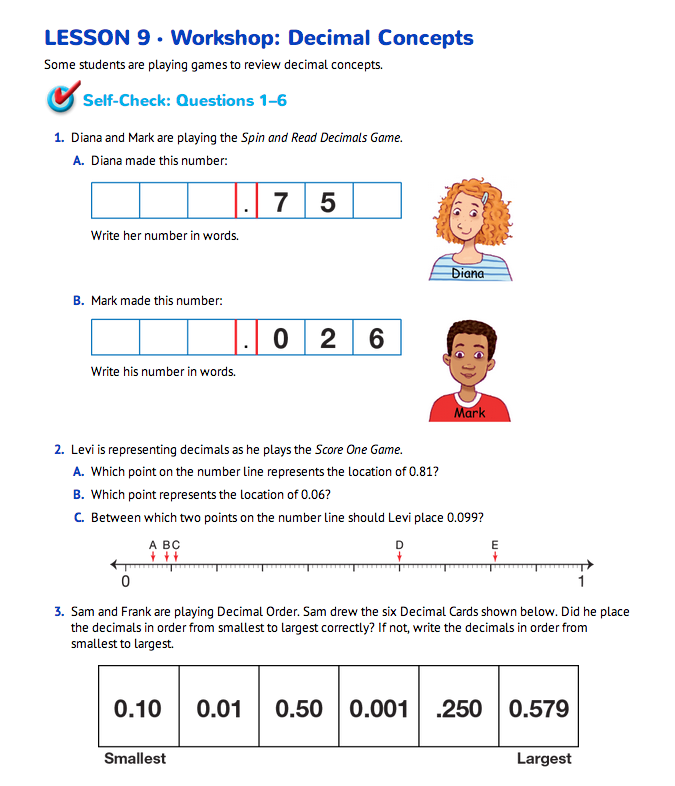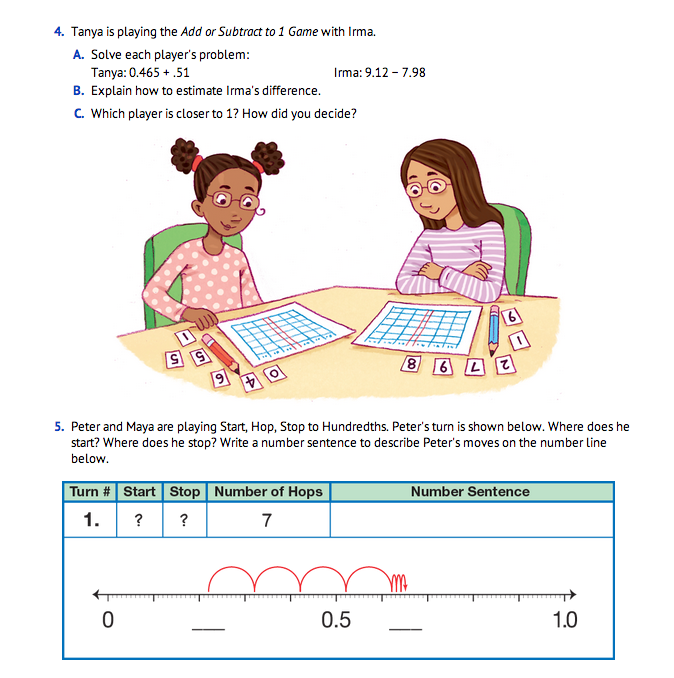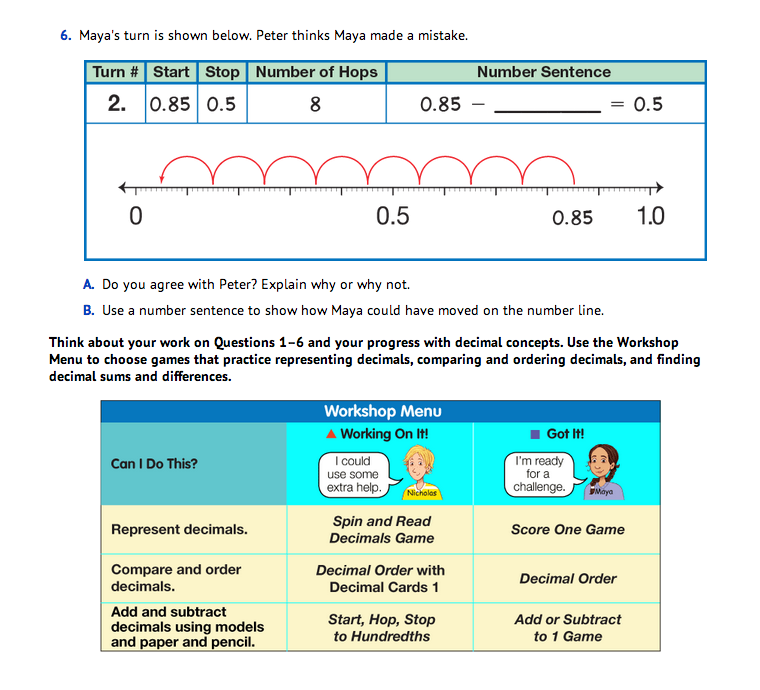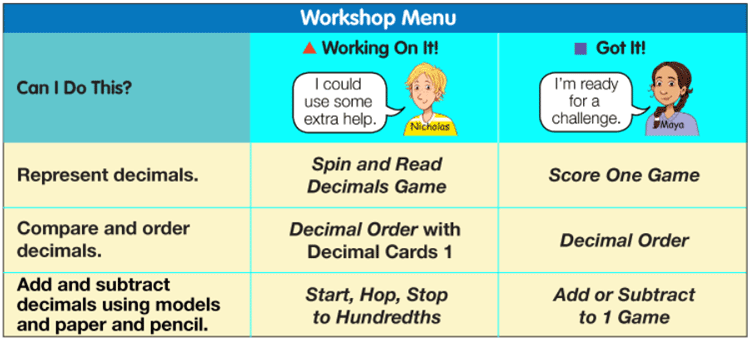Workshop: Decimal Concepts
Est. Class Sessions: 2Developing the Lesson
Review Decimal Concepts. Direct students to the Workshop: Decimal Concepts pages in the Student Guide. Assign Self-Check: Questions 1–6 for students to complete individually. Students solve problems that assess their abilities to represent decimals, compare and order decimals, and find decimal sums and differences. These questions serve two purposes. First, they clearly communicate the content of the related targeted practice to students. Second, they help students quickly self-assess their progress with Expectations to help them choose which games to play in the Workshop. Encourage students to use the My Decimal Strategies Menus they completed in Lesson 8 and any other tools they have used during the unit.
Discuss Student Responses. Upon completion, discuss students' answers to Self-Check: Questions 1–6. At this time you can also briefly review the basic premise of the decimal game presented in each question. Students have had the opportunity to play each of the games in Unit 8 with the exception of the Spin and Read Decimals Game; however, they played a version of this game in Unit 3.
Choose Targeted Practice. The games in this Workshop address Expectations as shown in Figure 1. Remind students that Questions 1–2 deal with decimal representation. Question 3 involves comparing and ordering decimals. Questions 4–6 focus on adding and subtracting decimals. After discussing the Self-Check questions, students self-assess by thinking about the “Can I Do This?” questions in the left-hand column of the Workshop Menu that follows Question 6 in the Student Guide. See Figure 2. Ask students to think about their progress with these Expectations and choose from the following two groups:
- Students who are “working on it” and need some extra help should circle the games marked with a triangle (
 ). These games provide scaffolded support for developing the essential underlying concepts as well as some opportunities for practice.
). These games provide scaffolded support for developing the essential underlying concepts as well as some opportunities for practice. - Students who have “got it” and are ready for a challenge or extension should circle games marked with a square (
 ). These games provide some practice and then more into opportunities for extension.
). These games provide some practice and then more into opportunities for extension.
Check students' choices to see how well they match your own assessment of their progress on the related Expectations. Help students make game selections that will provide the kind of practice they need.
Play Decimal Games. Once students select the games to play in the Workshop, have them find partners who have made the same choice. Students can start with any game and simply move to another open game station when they finish. Students may play different games with different partners as the Workshop progresses. Provide access to calculators, base-ten pieces, and copies of the Decimal Number Lines, Hundredths Circles, and Decimal Grids Masters throughout the Workshop.



















